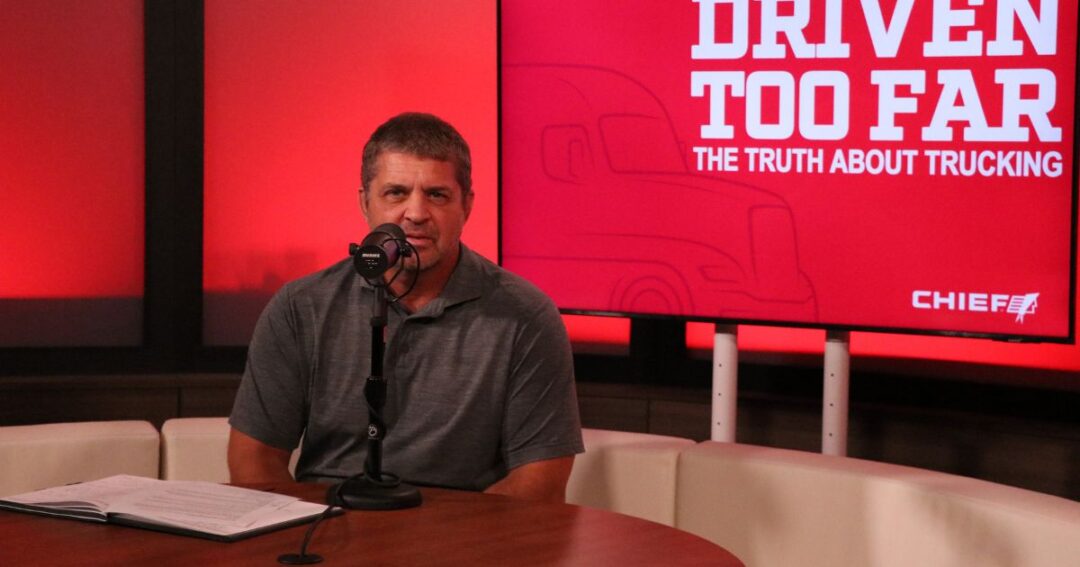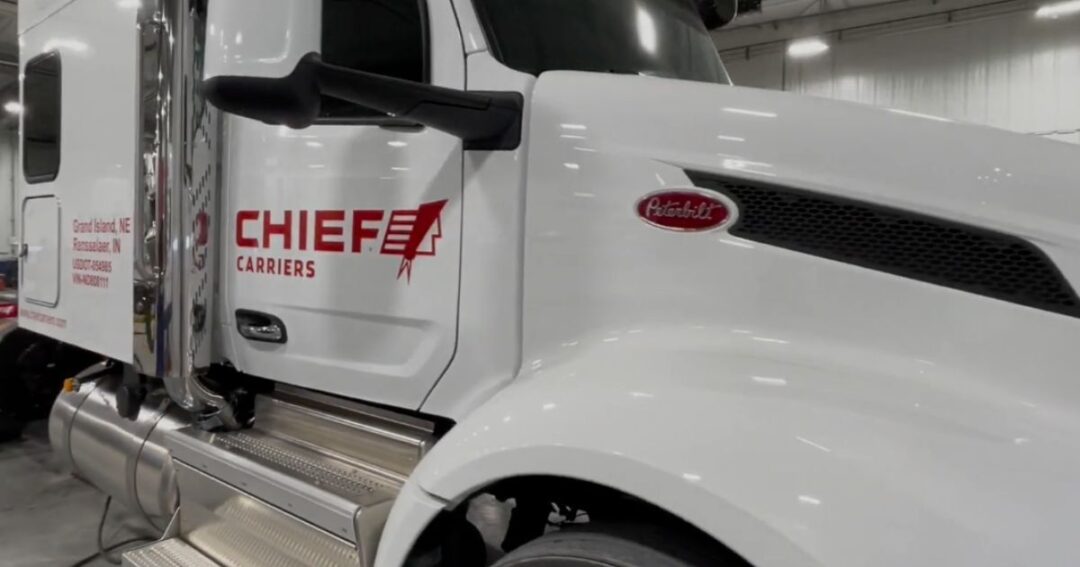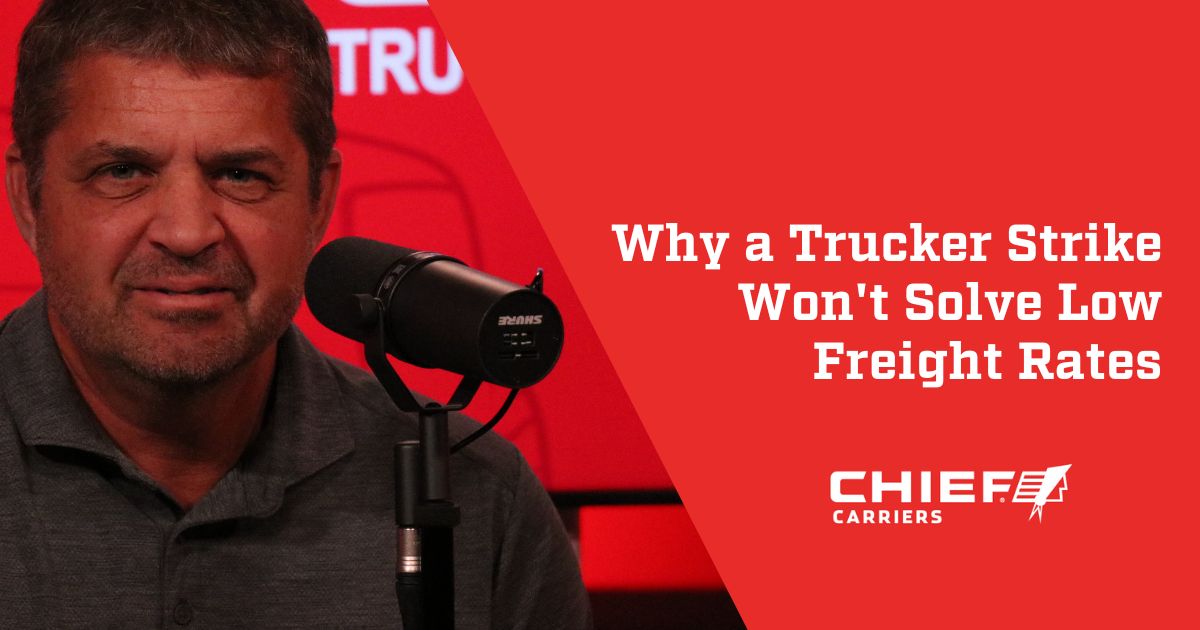Trucker Strike? Low Freight Rates Demand Smarter Solutions
Are you a truck driver feeling the squeeze of low freight rates? You’re not alone.
Across social media and trucking forums, there’s been increasing chatter about potential trucker strikes to address this issue.
But before you park your rig in protest, let’s take a deeper look at why strikes might not be the silver bullet many hope for.
In this Driven Too Far post, we’ll explore the complex factors behind current freight rates and why a more nuanced approach is needed to address the challenges facing the trucking industry.
The Road to Low Freight Rates: Understanding the Journey
To comprehend our current situation, we need to look back at the roller coaster ride the trucking industry has experienced since 2020.
Let’s break it down:
The COVID-19 Boom
When the world shut down due to COVID-19, an unexpected phenomenon occurred in the trucking industry. As store shelves emptied and supply chains strained, the demand for trucks skyrocketed.
This surge led to a significant spike in freight rates, creating a golden opportunity for truckers.
During this period:
- Freight rates shot up due to high demand and limited capacity
- We saw a more than 50% increase in new motor carrier registrations
- Some owner-operators reported profits as high as $20,000 per month
It seemed like a trucking paradise. But as the saying goes, what goes up must come down.
The Inevitable Downturn
As supply chains stabilized and demand normalized, the market began to shift. Since October 2022, over 15,000 registered carriers have gone out of business, and this trend continues.
Why is this recession lasting longer than usual? Two key factors are at play:
- Stimulus Money: The influx of cash from government stimulus allowed many small operators to continue running even as profits dwindled.
- Lender Behavior: Financial institutions that eagerly lent money during the boom are now hesitant to foreclose on loans, fearing significant losses due to depreciated equipment values.

The Current State of Affairs: A Fragmented Industry
Today’s trucking industry looks vastly different from just a few years ago. Consider these statistics:
-
There are now over 750,000 registered motor carriers, up from about 400,000 pre-pandemic
-
Nearly 98% of these carriers operate 10 trucks or fewer
This fragmentation is crucial to understanding why a strike might not be effective. With so many small operators, coordinating a unified action becomes extremely challenging.
Why Strikes Aren’t the Answer
While the frustration over low freight rates is understandable, here’s why a strike is unlikely to solve the problem:
Industry Fragmentation
With hundreds of thousands of small operators, getting everyone to agree on and participate in a strike is nearly impossible. For every trucker who parks their rig, another may see it as an opportunity to pick up extra loads.
Financial Realities
Many truckers live paycheck to paycheck. Parking a truck for a week or a month isn’t financially feasible for most operators, regardless of their desire to participate in a strike.
Market Dynamics
Shippers and brokers aren’t the enemy here. They’re responding to market forces, just as truckers did when rates were high. This pendulum swing is a natural part of economic cycles in the industry.
Temporary Impact
Even if a strike temporarily increased rates, without a fundamental change in market capacity, rates would likely fall again once normal operations resumed.
The Real Solution: Market Correction
The hard truth is that for freight rates to rebound sustainably, we need a market correction. This means:
- Some carriers, particularly those who entered the market during the boom, may need to exit the industry
- The overall number of available trucks needs to decrease to match current demand
While this is a tough pill to swallow, it’s the nature of business cycles. The strong operators who managed their finances well during the boom times are more likely to weather this storm.
Strategies for Survival
Instead of focusing on strikes, consider these approaches to navigate the current market:
- Diversify Your Customer Base: Relying solely on load boards makes you vulnerable to rate fluctuations. Try to secure direct contracts with shippers when possible.
- Manage Your Finances Carefully: If you made good money during the boom, use those reserves wisely to get through this lean period.
- Optimize Your Operations: Look for ways to reduce costs and increase efficiency in your business.
- Stay Informed: Keep up with industry trends and economic indicators to make informed decisions about your business.
- Consider Partnering with Established Carriers: Companies like Chief Carriers can offer stability and consistent work during turbulent times.
Looking to the Future
Experts predict that we may not see a significant rebound in rates until the summer of 2025. While that may seem like a long way off, remember that the trucking industry has always been cyclical.
At Chief Carriers, we understand the challenges you’re facing. We’ve been through market ups and downs before, and we’re committed to supporting our drivers through this difficult period.

Driving Forward Together
While the idea of a strike may seem appealing when times are tough, it’s crucial to understand the broader market dynamics at play. The current low rates are a result of complex economic factors that can’t be solved by a simple work stoppage.
Instead, focus on running your business as efficiently as possible, building strong relationships with customers, and preparing for the eventual market turnaround.
Remember, in trucking, as in life, perseverance and adaptability are key to long-term success.
Stay safe on the roads, and remember: this too shall pass. The trucking industry has faced challenges before, and we’ll get through this one together.
Chief Carriers
If you’re looking for stability and support during these challenging times, consider exploring opportunities with Chief Carriers.
We’re committed to helping drivers navigate the ups and downs of the trucking industry, providing the resources and support you need to succeed.
Driven Too Far Podcast
Driven Too Far is a podcast that delivers the unvarnished truth about the trucking industry, hosted by Andrew Winkler, who understands the challenges drivers face.
From answering common questions for aspiring truck drivers to providing insider knowledge on pay, benefits, safety, and career advancement, this podcast offers valuable insights to help you balance your trucking career and family life.
The Driven Too Fast Podcast is produced by Two Brothers Creative.

